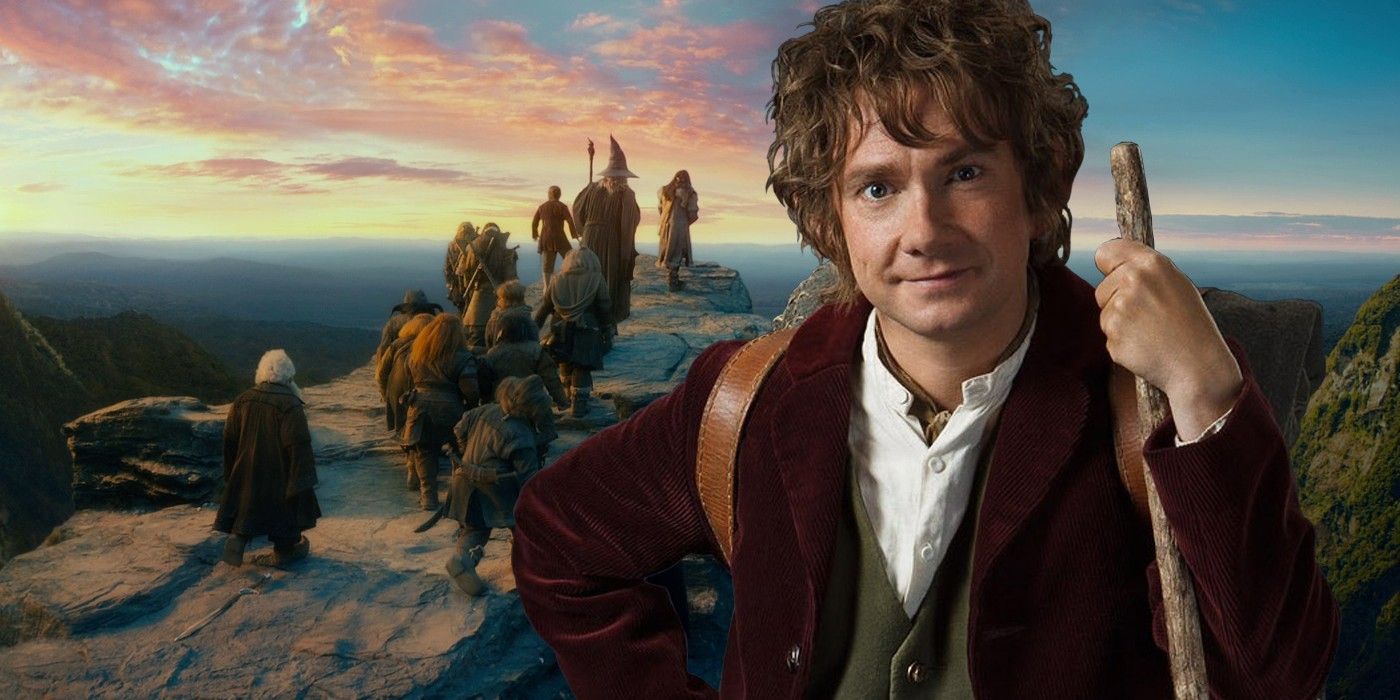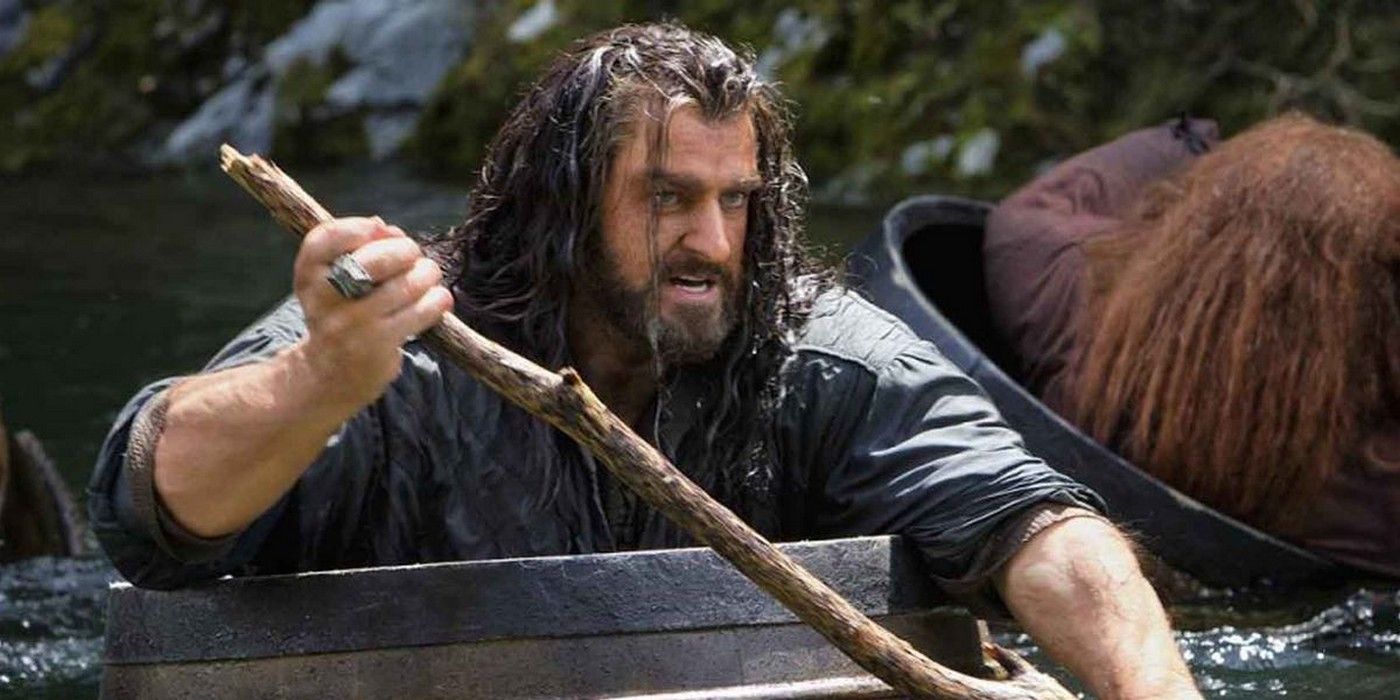If The Hobbit had remained as 2 films, where would An Unexpected Journey have ended? It's no secret that production on the Hobbit movies went about as smoothly as the Fellowship's trek through the Mines of Moria. Guillermo del Toro was initially hired to direct the Lord of the Rings prequels and sensibly opted to split Tolkien's book into a pair of movies. While acknowledging the possibility of a trilogy was discussed, del Toro claimed at the time that he felt 2 films better serviced the book. However, the director decided to step away from Middle-earth after a series of Hobbit delays and Peter Jackson was eventually drafted in as his replacement.
With no time for preparation or pre-production, Jackson was flying blind while filming The Hobbit and the fraught process saw 2 films become 3. According to the director, an extra installment was needed to properly explore both The Hobbit itself and Tolkien's appendices regarding that era. In Jackson's Hobbit trilogy, An Unexpected Journey ends with the fight between Azog and the Dwarves. Bilbo and Gandalf's eagle pals help see off the orcs and the story wraps up with everyone looking out towards Erebor in the distance. When the sequel, The Desolation of Smaug, picks up, the protagonists are still on the run from Azog until the villain is called away by the returning Sauron. But if An Unexpected Journey had remained a brisk 2-film series, where would the split have occurred?
Both del Toro and Peter Jackson have given their thoughts on where The Hobbit could realistically be split in half, citing the barrel sequence where the Dwarves and Bilbo escape from the Elves. Jackson has previously revealed this is where he would've bisected Bilbo's adventure, ending with the group meeting Bard for the first time, and Del Toro hints at much the same. According to The Hobbit's original director, his story would've split at the moment Bilbo's relationship with the Dwarves changed, and the Hobbit proved himself as more than just a sheltered Shire-dweller. The barrel sequence certainly fits that description as until then, the relationship between Bilbo and his companions is somewhat strained in Tolkien's story, but fending off the spiders and then spearheading the barrel escape finally cements the Hobbit's worth.
In Jackson's final version of An Unexpected Journey, it's evident how the director takes elements of this planned ending and works them into the Azog confrontation scene finale. In Tolkien's book, there is no Azog and Bilbo doesn't save the day. The gang are chased into trees by Wargs and Gandalf's eagles swoop in to assist, with the Dwarves using pine cones as makeshift grenades as in the movie. In order to transform this sequence into a proper ending that caps off the first installment of Jackson's trilogy, Azog is introduced as a leading antagonist and Bilbo decides to hulk-up much sooner, coming to the aid of Thorin and fending off Azog's goons. The conversation on the rock with the party all looking towards Erebor is then jettisoned in to bring a sense of closure to chapter 1.
This split fulfills del Doro's original plan to end the movie with Bilbo proving himself, but the transition obviously comes much earlier, both in the narrative and in the physical journey. The change also requires adding outside elements such as the Azog sub-plot in order to create a big blockbuster climax out of something that originally would've been a standard mid-film action sequence.
Naturally, the big question is whether the original split would've worked better than how Jackson ultimately divided his 3 Hobbit movies. Certainly, An Unexpected Journey and The Desolation of Smaug conclude in awkward fashion. The first film's ending feels tacked-on and when the sequel picks up, there's no progression in the narrative - the journey just continues. Even worse, The Desolation of Smaug's ending comes very abruptly, failing to provide any sort of resolution ahead of the finale. In contrast, The Hobbit's barrel sequence provides a far more natural split. Aside from the strong action and impressive visuals, the sequence moves the story from a journey through Middle-earth to the confrontation with Smaug and the reclamation of Erebor, providing an effective ending while simultaneously teasing a new beginning - something An Unexpected Journey doesn't achieve in its finished form.


